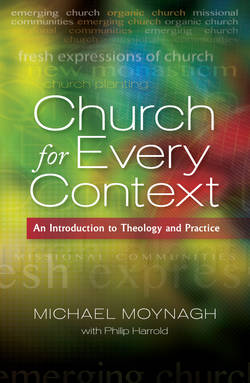Читать книгу Church for Every Context - Michael Moynagh - Страница 97
На сайте Литреса книга снята с продажи.
Some characteristics of the expressive self
ОглавлениеOne is that most people seek to express themselves within an ‘immanent frame’. This is Charles Taylor’s term for how the different structures in which people now live – scientific, social, technological and so on – are understood on their own terms. They are ‘this worldly’. The supernatural is left out (Taylor, 2007, pp. 539–93).
Many people live in the here and now. They are preoccupied with day-to-day concerns. A UK questionnaire-and-interview study of people born after 1982 (Generation Y) found that the sample, who attended church to some extent, had an ‘immanent faith’. Family, friends and self were their prime axes of meaning, hope and purpose. Life was focused on the everyday. Individuals tended to think in terms of plans rather than purpose (Collins-Mayo, Mayo and Nash, 2010, p. 89).
Mark Berry, a pioneer in Telford, England, claims that at local mind–body–spirit festivals, where you would expect spirituality to be unusually present, ‘spiritual tourists’ looking for spiritual growth are rare. More often he encounters ‘hurting people, the bereaved, the injured, the lonely and the sick. They do not seem to be in search either of an experience or a belief system, they are looking for healing, for a reason or an explanation for the way they feel’ (Berry, 2010, p. 59). While the language of spirituality may be around, for most people the practice of spirituality is lost. They have no time or space for it.
This resonates with the findings of Paul Heelas. He provides evidence that interest in ‘wellbeing spirituality’ is increasing substantially (Heelas, 2008, pp. 60–78). For example, the proportion of high-street shops in Kendal selling New Age products jumped from 30 per cent in 2001 to 45 per cent in 2003. New Age-related products and practices are ‘spiritualities of life’ because they are oriented to the day-to-day. They are an example of ‘immanent’ existence (pp. 21–2).
Heelas argues that the immanent life has an ethical component, which is a second characteristic of the expressive self. Holistic spirituality is not merely the extension of capitalism in which individuals consume spirituality without giving anything back. What practitioners and clients actually say shows that popular mind–body–spirit practices are an ethically charged force for the good life. Individuals tap into them in the hope – sometimes strongly, sometimes faintly held – that they will be helped to live well for themselves and for others.
Heelas points out that much consumption involves more than pleasure: it is about cementing bonds of identity and making life meaningful (Heelas, 2008, pp. 177–8). Within this frame is a strong ethical dimension, such as shopping for others in the household (Miller, 1998) and gift purchases to show appreciation and affection. The immanent life includes the desire to do good.
Expressive selves, third, increasingly live in association with others. An earlier study of Generation Y described their focus on family and friends. Their worldview is a ‘happy midi-narrative’ that eschews grand ideals in favour of a life centred on family, friends, and the use of popular arts and culture (Savage, Collins-Mayo and Mayo 2006). This probably describes other age groups as well. In 2001 for example, of the adult population living separately from their parents, just over half saw their mother weekly, two-fifths saw their father weekly, while 26 per cent of men and 33 per cent of women saw an adult sibling at least once a week. The figures had been stable since 1995 (Park and Roberts, 2002, pp. 192–3).
Although ‘personal communities’ of friends and family have always been important, they are now more continuously at the forefront of individuals’ lives. Rather than isolating people, as some fear, technology is being used in social ways. iPod owners play new tracks to their friends and compile playlists for family journeys (Standage, 2005, pp. 220–1). Mobile phones allow users to be constantly present to family and friends. ‘What is new is the emerging feeling that one should be accessible everywhere and at all times’ (Sorensen, 2006, p. 55). Technology is increasing sociability.
Along with the immanent life, its ethical dimensions and personal communities, the fourth characteristic of expressive selves is their particular mode of spirituality. Where spirituality is pursued intentionally, expressive selves favour the quest (Taylor 2007, pp. 507–8). They prefer to be on a journey than to reach a destination. Destination speaks of closure, whereas journey keeps options open. There must be no presumed starting points or exclusions that pre-empt the experience. Individuals must travel their own paths and respect the paths of others. In searching for support, expressive selves would rather have resources for the journey than ready-made answers.
